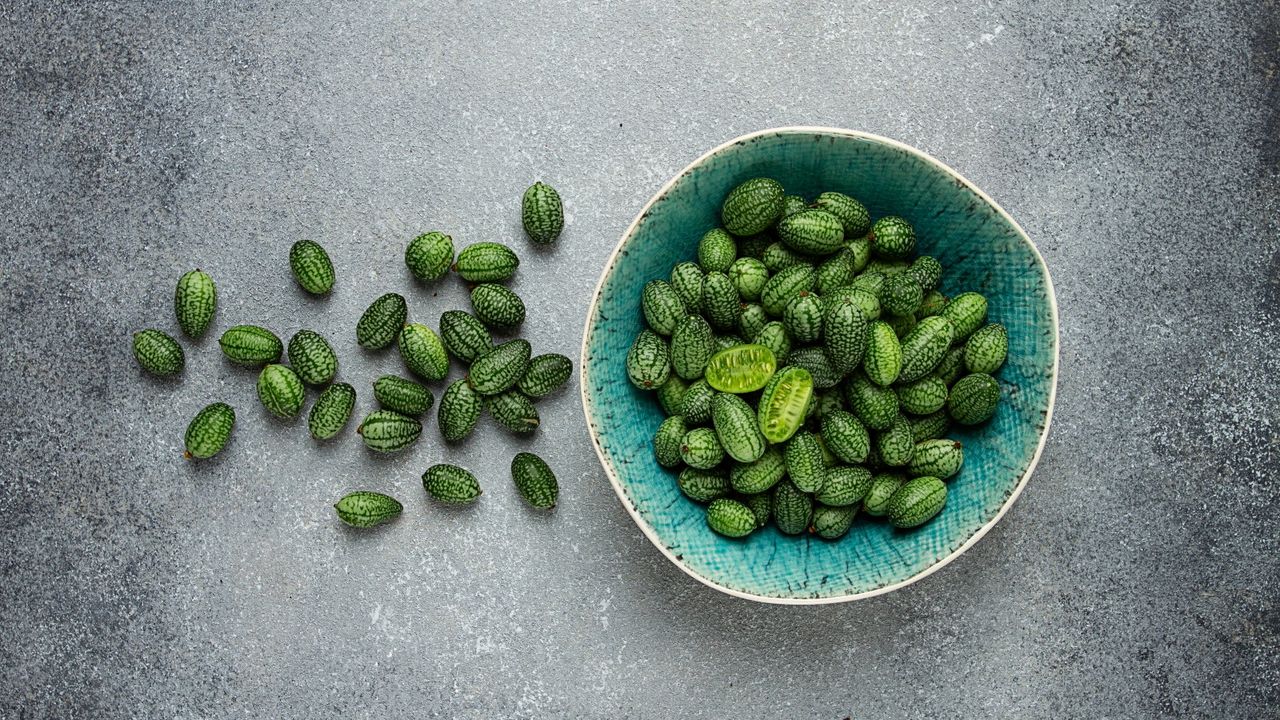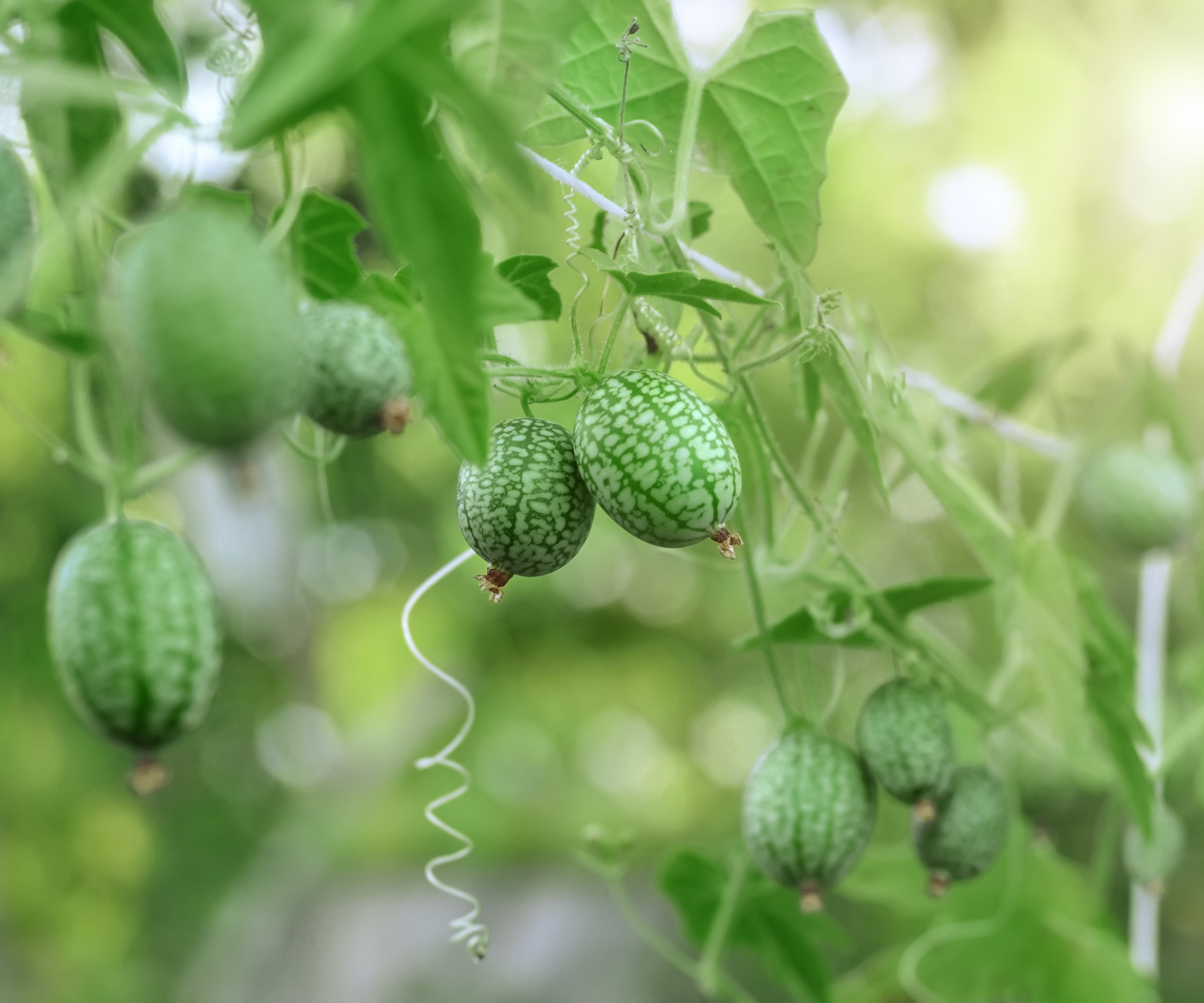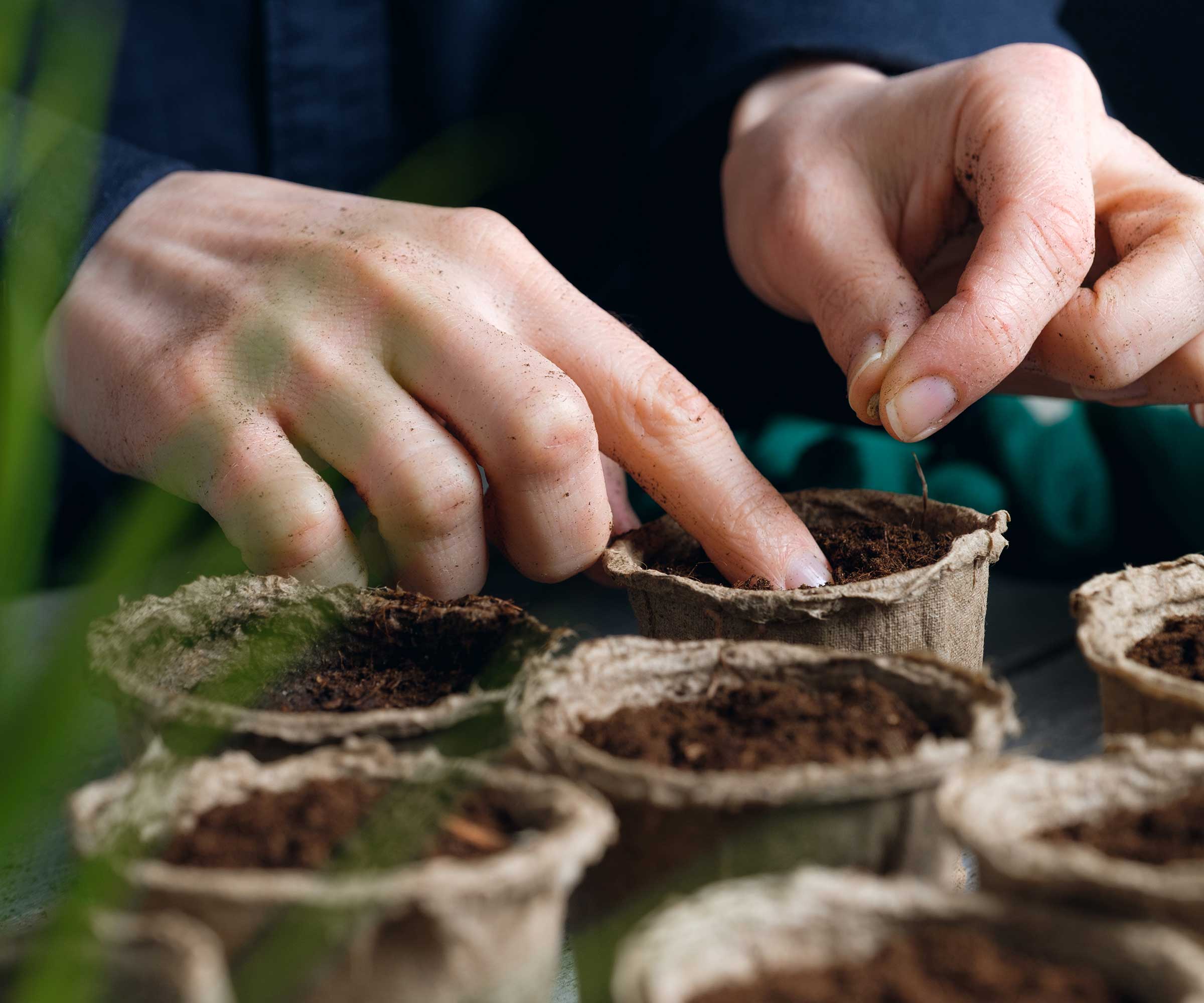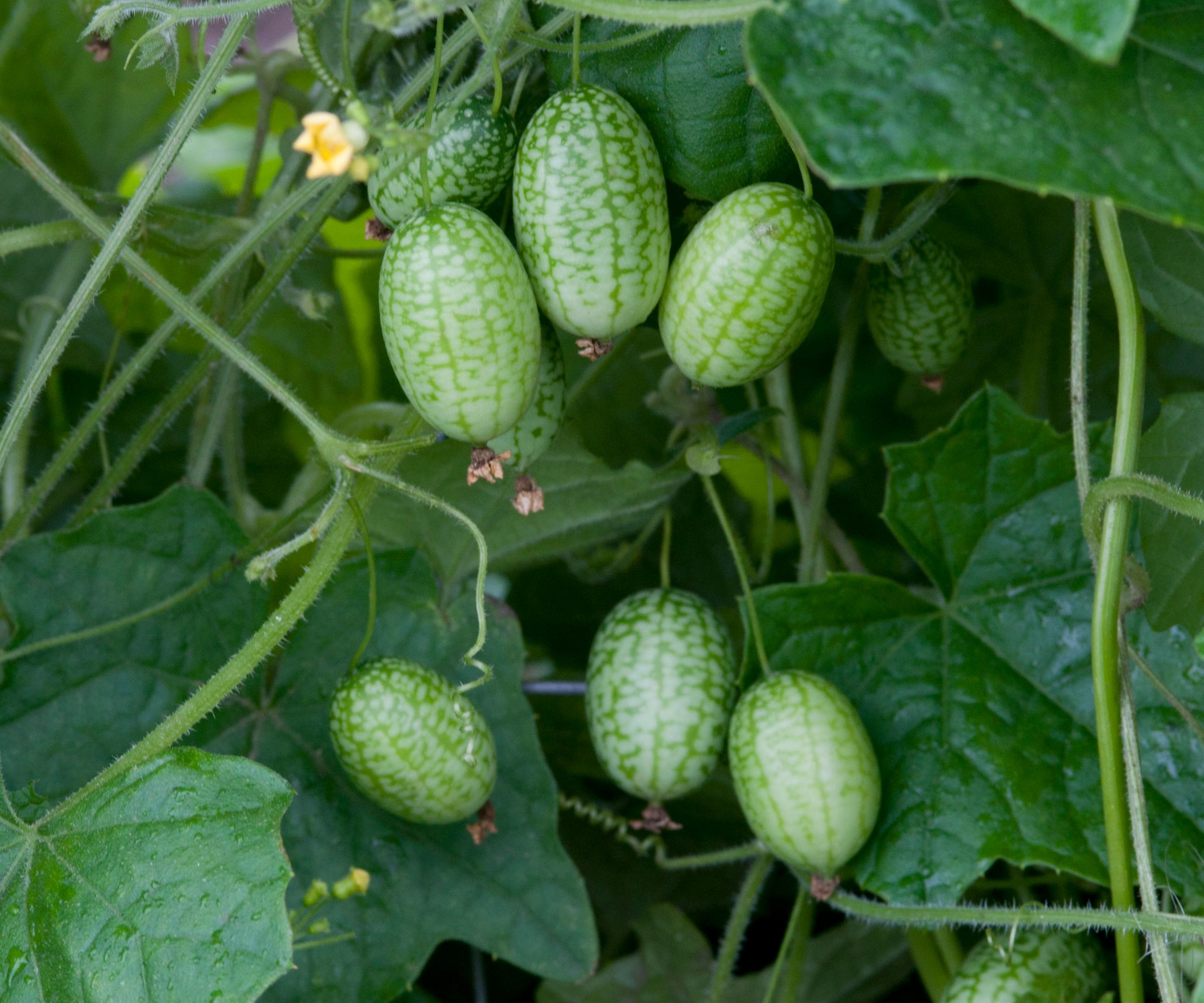
You may have heard of cucamelons and even seen these quirky fruits at farmers' markets or stores, but have been put off by their premium price tag. However, if you want to dip your toe into the water and try out this crop, these unique plants are easy to grow. The fruits will undoubtedly stand out in any home vegetable garden.
In fact, cucamelons are having a moment; even home guru Martha Stewart hailed them as one of her best vegetables to grow for beginners due to how simple and low-maintenance they are.
Looking like tiny watermelons growing on tall vines, they make a fun addition to any space, and your harvest can be eaten raw in salads, used as garnish, added to salsas, or pickled. If they are good enough for Martha, they’ve surely got to be worth trying?

How to grow cucamelons – all you need to know
Cucamelons (Melothria scabra) look like small watermelons, reaching around an inch in length, yet are a relative of the cucumber. Indeed, despite resembling watermelons, they have a citrussy, cucumber-like flavor. The fruits can be eaten raw or cooked and are full of vitamins and antioxidants.
Cucamelons are also known as Mexican sour gherkins or mouse melons. They can be perennials in US hardiness zones 9-11, though they are commonly grown as annuals. The vines can reach up to ten feet, but cucumelon plants are simple to sow, plant, and maintain.
To show how easy it is to grow cucamelons, this guide explains how to sow, plant, maintain, and harvest the plants. It also includes expert tips from an experienced horticulturist.
How to grow cucamelons from seed

Cucamelon seeds need warmth to germinate, and Ashleigh Smith from True Leaf Market advises: 'While they are best directly sown outdoors about a week after your average last frost date, they can be started indoors about 3-4 weeks ahead of time.'
Growers in cooler climates are best to sow seeds indoors a few weeks before their last frosts. Sow seeds half an inch deep in pots filled with a quality potting mix. It is recommended to use four-inch pots or biodegradable pots (you can get biodegradable pots at Amazon) to avoid root disturbance from pricking out and potting on seedlings.
Keep the container in a warm place, ideally where it can get temperatures of 70-80ºF. Heated mats or a heated propagator can be used to provide sufficient extra heat for good germination rates. The seeds should germinate within two weeks.
Continue to keep the soil moist, and eventually transplant the seedlings into the garden after the last frost date in spring, once plants reach six inches tall. Remember to harden off seedlings before putting them in their final planting spot.
You can get cucamelon seeds at True Leaf Market to sow in spring
How to grow cucamelons – Where to plant

Cucamelon plants prefer sun and warmth, conditions similar to those of cucumbers. They can be grown outside in warmer zones or cultivated in greenhouses in cooler climates.
Grow cucamelons in a spot where plants can get six to eight hours of daily sunlight. They will develop and fruit best in full sun. However, plants in hot climates will benefit from a bit of afternoon shade from the scorching summer rays.
An ideal soil type for cucumelons is fertile and well-draining. It is advisable to incorporate organic matter, such as homemade compost or well-rotted manure, into the planting site ahead of time. This will improve the structure and moisture retention, as well as provide nutrients to plants as it breaks down.
Cucamelon plants should be spaced around a foot apart. As with growing cucumbers, these vining plants need supports or a trellis to grow vertically. This offers many benefits, including keeping plants off the ground, reducing the risk of diseases, and making harvesting easier.
'Many vertical supports can be used to grow cucamelons,' claims Ashleigh Smith. 'Something flat or arched with large fence gaps will support the plant’s growth while allowing for plenty of space for your hands to manoeuvre around the vines.'
Not supporting the vines can lead to messy plants that sprawl over vegetable garden beds, and the fruits will be more susceptible to pest damage if they sit on the soil surface.
How to grow cucamelons – Maintenance tips

- Watering - Cucamelons like consistently moist soil, so keep an eye on when to water, especially during periods of prolonged hot weather. The plants tend to want at least one inch of water per week, whether provided by natural rainfall or by watering. Avoid the mistake of overwatering plants, as cucamelons dislike waterlogged soil. As for how to water, take care to direct the flow of water to the soil rather than over the plants, as wet foliage leaves the plants susceptible to powdery mildew. Using drip irrigation or a soaker hose (such as this heavy-duty soaker hose at Amazon) is an ideal way to keep the foliage dry and provide a steady stream of water to the root zone.
- Feeding - Fertilizing plants is key to getting the best harvest. This starts with boosting the soil with the addition of compost before planting, followed by a dose of balanced slow-release fertilizer a few weeks after. A feed like this organic all-purpose fertilizer at Walmart is ideal. Once the plants start flowering, switch to a liquid high-potassium feed, which will help develop and ripen fruits. Give plants a feed every few weeks to promote the production of fruit.
- Pruning - There is not a lot of pruning required when you grow cucamelon, though there are times when a bit of trimming can help. This includes pruning away any dead foliage, damaged stems, or congested growth to improve air circulation and help prevent diseases, and removing any growth affected by powdery mildew. Plus, when the vines reach around eight feet, cutting them back will encourage a more branching structure, and the reward is more fruit to harvest.
- Harvesting - Cucamelons tend to take 65-75 days to go from sowing to the first harvest, but it is vital to pick the fruits at their peak, when they are around one inch long. Ashleigh Smith says: 'Cucamelons are about the size of a grape and have a light green color with dark green striping.' The window to pick them at their best is small, and overly-ripe cucamelons can go soft. 'As they continue to age, they will start to turn yellow, losing their flavor,' adds Ashleigh. 'Harvest frequently, as this will encourage more fruit development and maintain a clean and healthy growing space.' Harvest cucamelons by snipping them with a pair of clean and sharp pruning shears or garden snips, while ripe fruits should also simply twist off the vine. Be careful to support the vines when picking; not doing so is a harvesting mistake that risks damaging the vines.
How to grow cucamelons in pots
In smaller spaces, you can grow cucamelons in containers on a patio, deck, or porch. Choose a container at least 12 inches wide, with drainage holes in the bottom, and fill it with a quality soil for container gardening.
The container will need a trellis or supports added for the vines to climb, or you can get a planter box with an attached trellis, such as this rustic wooden planter with trellis at Amazon. Place the container in a sunny and protected spot for the best results.
Cucamelons in pots will require more watering and feeding than plants in the ground, including feeding with a high potassium feed every two weeks once the plants start flowering.
FAQs
Can you grow cucamelons in a hanging basket?
You can grow cucamelons in a hanging basket. They are lightweight plants, and the vines can cascade over the edges of the hanging basket rather than climb upwards.
As well as cucamelons, Martha Stewart also highlighted radishes, zucchini, and amaranth as the best vegetables for beginners. The surprise inclusion there is amaranth, which is not commonly grown as an edible crop. However, the facts are, it is really easy to grow amaranth for its high-protein seeds, while you can also grow amaranth as a microgreen for speedy, nutritious pickings for garnish or to add to salads and sandwiches.
Get two live cucamelon seedlings to plant directly into your vegetable garden.







